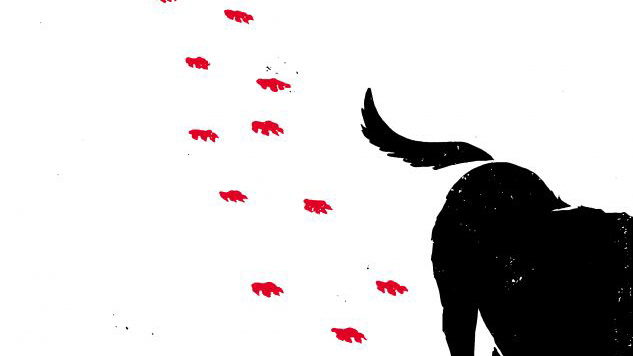Source: The Legend of Zelda: A Link to the Past. Property of Nintendo.
We're having a field day with this one!
Graphic designers and video game designers might seem like they're worlds apart, but there's a lot that the former can glean from the latter. Video game design, with its emphasis on user engagement, storytelling, and visual allure, holds valuable lessons for graphic designers aiming to create more captivating visual experiences. Let's dive into leveling up your design game and how graphic designers can learn from video game design.
User-Centered Design:
Video game designers excel in putting users at the forefront of their creations. Graphic designers can learn from this approach by prioritizing user experience, ensuring that their designs resonate with and engage the audience effectively.
Video game designers excel in putting users at the forefront of their creations. Graphic designers can learn from this approach by prioritizing user experience, ensuring that their designs resonate with and engage the audience effectively.
Storytelling and Narrative Techniques:
Video games are masters at weaving compelling narratives. Graphic designers can borrow from these techniques to craft visuals that tell a vivid and engaging story, adding depth and emotion to their designs.
Video games are masters at weaving compelling narratives. Graphic designers can borrow from these techniques to craft visuals that tell a vivid and engaging story, adding depth and emotion to their designs.
Attention to Detail and Consistency:
Video game designers leave no stone unturned, meticulously crafting every element of their worlds. Graphic designers can apply this same level of attention to detail to ensure that their designs are cohesive, polished, and immersive.
Video game designers leave no stone unturned, meticulously crafting every element of their worlds. Graphic designers can apply this same level of attention to detail to ensure that their designs are cohesive, polished, and immersive.
Interactive Design and Feedback Loops:
Video games thrive on interactivity and immediate responses to player actions. Graphic designers can harness this concept to create designs that encourage user interaction, providing a dynamic and engaging experience.
Video games thrive on interactivity and immediate responses to player actions. Graphic designers can harness this concept to create designs that encourage user interaction, providing a dynamic and engaging experience.
Experimentation and Innovation:
Video game designers are pioneers in pushing the boundaries of technology and design. Graphic designers can draw inspiration from this spirit of experimentation to create innovative and groundbreaking designs that stand out in a crowded visual landscape.
Video game designers are pioneers in pushing the boundaries of technology and design. Graphic designers can draw inspiration from this spirit of experimentation to create innovative and groundbreaking designs that stand out in a crowded visual landscape.
Hierarchy of Information:
Video games excel in presenting crucial information to players in a clear and organized manner. Graphic designers can apply this principle by prioritizing and structuring information in their designs, ensuring that viewers can easily navigate and understand the content.
Video games excel in presenting crucial information to players in a clear and organized manner. Graphic designers can apply this principle by prioritizing and structuring information in their designs, ensuring that viewers can easily navigate and understand the content.
Emphasis on Iconography:
In video games, icons are vital for conveying actions, items, and information without the need for extensive text. Graphic designers can adopt this approach by utilizing clear and intuitive iconography to enhance user comprehension and streamline visual communication.
In video games, icons are vital for conveying actions, items, and information without the need for extensive text. Graphic designers can adopt this approach by utilizing clear and intuitive iconography to enhance user comprehension and streamline visual communication.
Dynamic Visual Language:
Video games adapt their visuals based on the player's actions, creating a dynamic and personalized experience. Graphic designers can draw inspiration from this by exploring techniques like animations, transitions, and interactive elements to add depth and vitality to their designs.
Video games adapt their visuals based on the player's actions, creating a dynamic and personalized experience. Graphic designers can draw inspiration from this by exploring techniques like animations, transitions, and interactive elements to add depth and vitality to their designs.
Accessibility and Inclusivity:
Video game designers increasingly focus on making their games accessible to a wide range of players, including those with disabilities. Graphic designers can follow suit by incorporating accessible design elements, such as readable typography, color contrast, and alternative text, to ensure their designs are inclusive to all users.
Video game designers increasingly focus on making their games accessible to a wide range of players, including those with disabilities. Graphic designers can follow suit by incorporating accessible design elements, such as readable typography, color contrast, and alternative text, to ensure their designs are inclusive to all users.
Iterative Design Process:
Video game development often involves multiple iterations and playtesting to refine the user experience. Graphic designers can benefit from this iterative approach by seeking feedback and continuously refining their designs based on user input, leading to more effective and user-friendly visual solutions.
Video game development often involves multiple iterations and playtesting to refine the user experience. Graphic designers can benefit from this iterative approach by seeking feedback and continuously refining their designs based on user input, leading to more effective and user-friendly visual solutions.
Embarking on a design journey is akin to entering a vast and boundless world, teeming with opportunities for creativity, innovation, and impact. As graphic designers, you have the power to shape experiences, evoke emotions, and communicate messages in ways that are both powerful and profound.
Remember, every pixel you place, every color you choose, and every detail you refine is a step toward creating something truly extraordinary. Embrace the lessons from video game design, and let them serve as stepping stones towards elevating your craft. You are not just a designer; you are a storyteller, a problem solver, and a creator of worlds.
So, keep designing, keep dreaming, and keep inspiring!
With boundless creativity,



